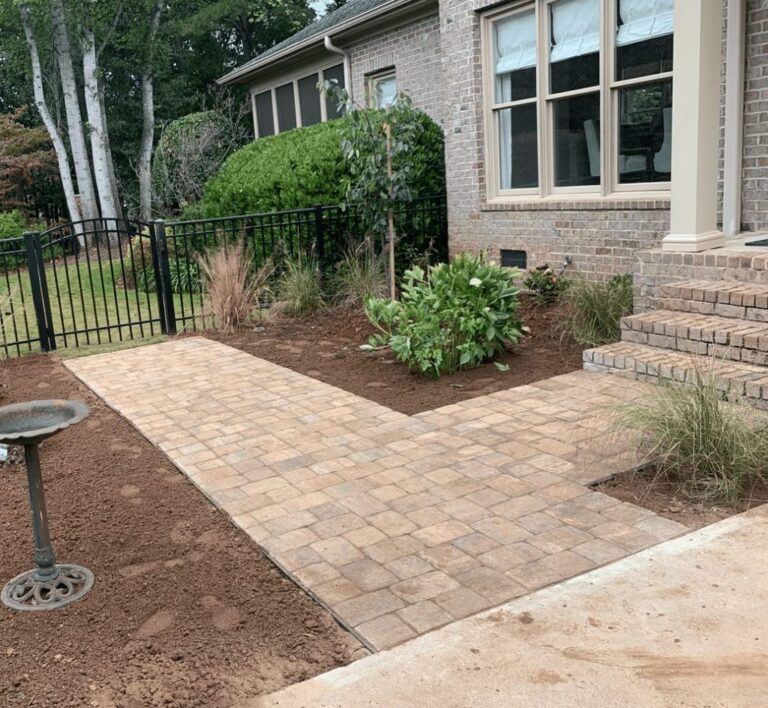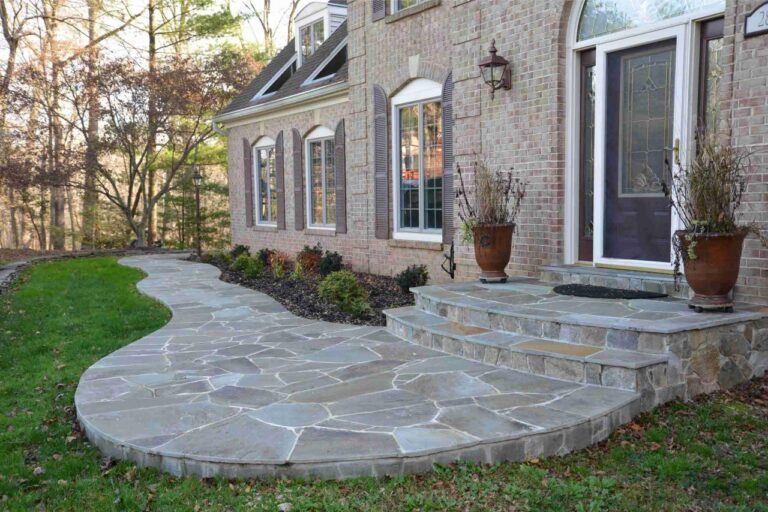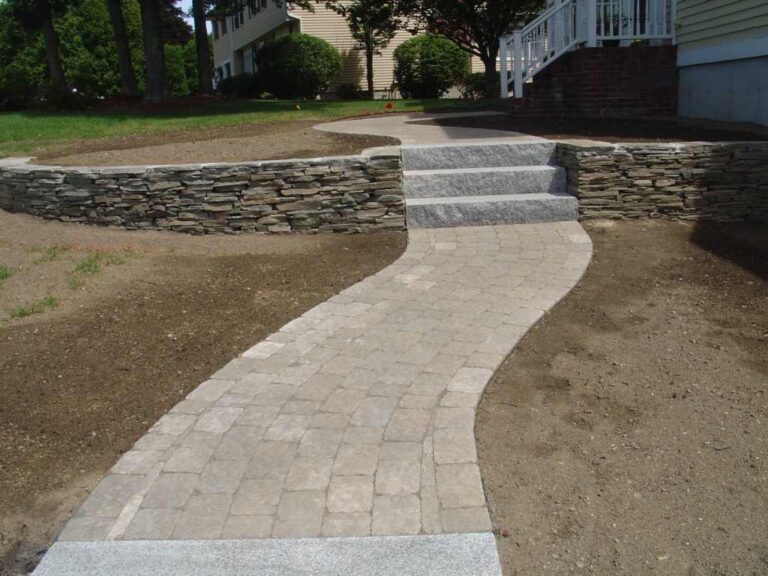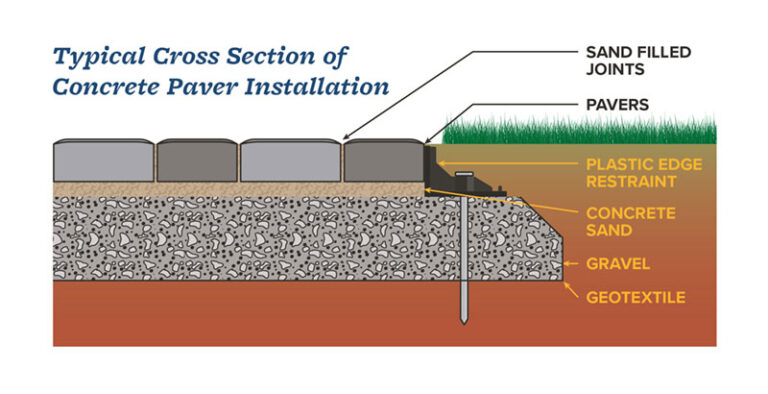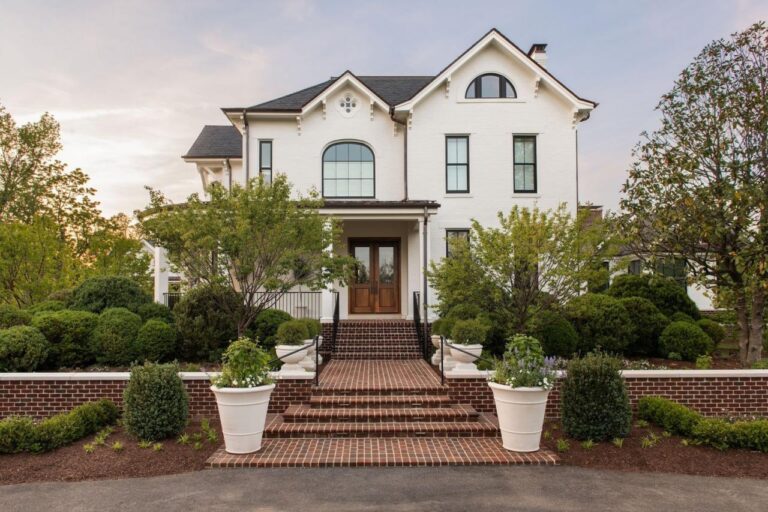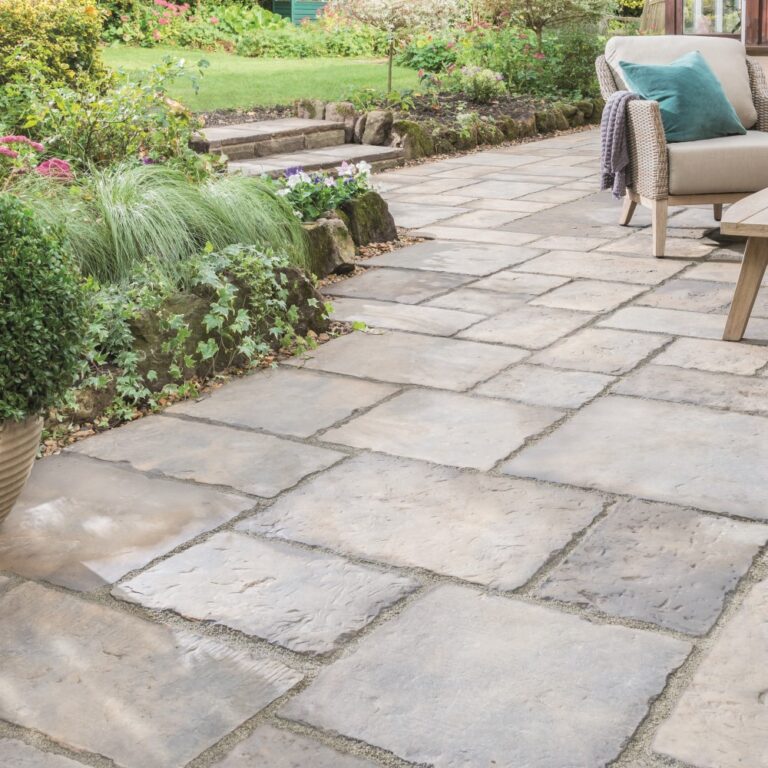Hardscape Walkways
Hardscape walkways transform outdoor spaces, offering both functionality and aesthetic appeal. From the classic elegance of brick pathways to the modern sleekness of concrete, the choice of materials significantly impacts the overall look and feel of your landscape. This comprehensive guide explores the diverse world of hardscape walkways, delving into design considerations, construction techniques, maintenance strategies, and the latest trends shaping this ever-evolving field. We’ll examine various materials, explore creative design options, and provide practical advice for creating durable and beautiful walkways that enhance your property for years to come.
This exploration covers a wide range of topics, from selecting the right materials and understanding their properties to mastering the art of installation and implementing effective maintenance routines. Whether you’re a seasoned landscaper or a homeowner embarking on a DIY project, this guide provides the essential knowledge and practical steps needed to successfully design, build, and maintain stunning hardscape walkways.
Types of Hardscape Walkways
Choosing the right material for your walkway is crucial, impacting both aesthetics and longevity. Several factors influence this decision, including budget, desired aesthetic, and the surrounding landscape. This section will explore various materials, their properties, and design considerations.
Common Hardscape Walkway Materials
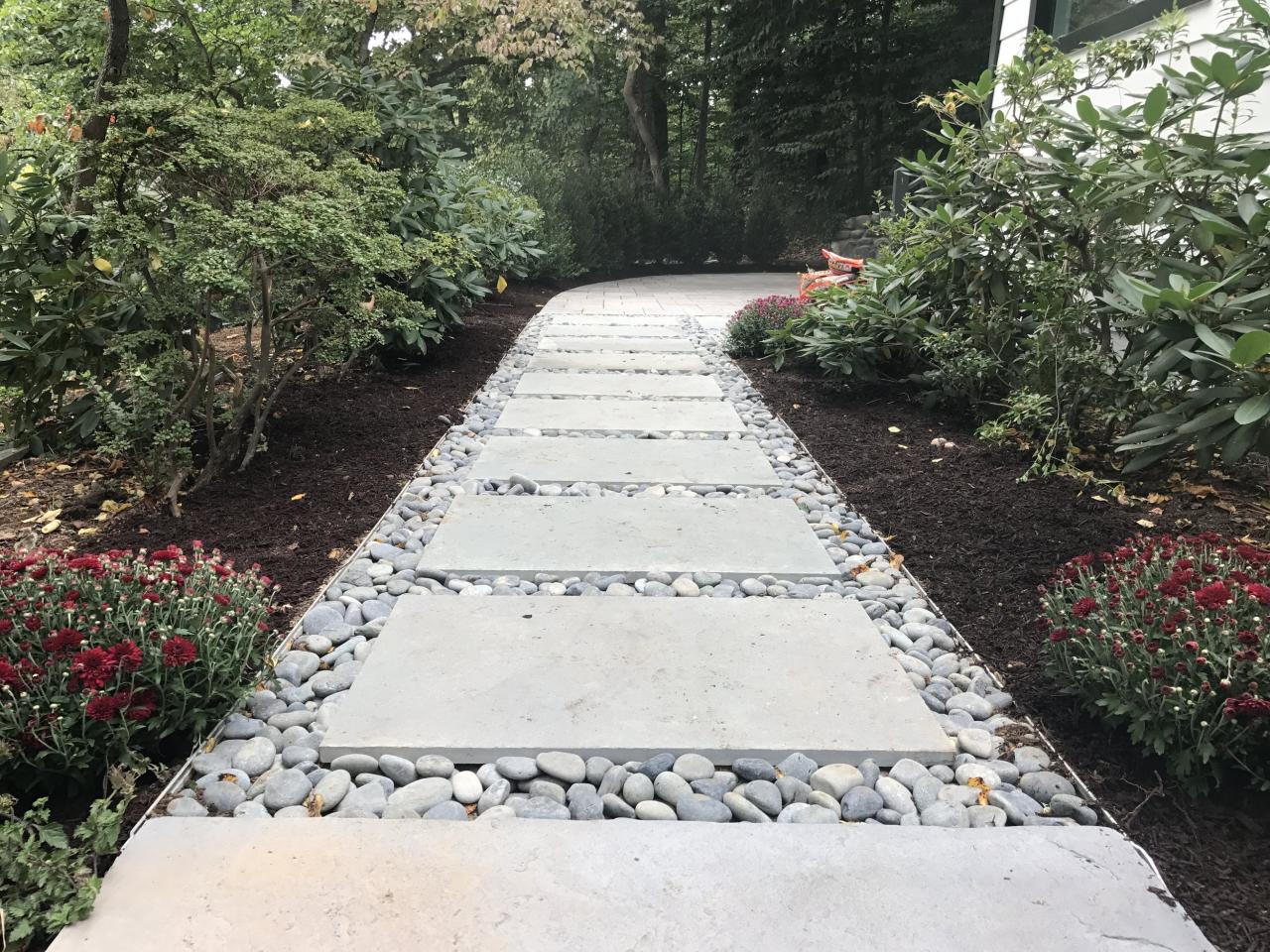
Source: Squarespace-cdn.com
Five common materials used for walkways each offer unique advantages and disadvantages. The following table summarizes their key characteristics:
| Material | Durability | Cost | Maintenance |
|---|---|---|---|
| Concrete | High; resistant to heavy traffic, but prone to cracking | Moderate to high, depending on finish and additives | Moderate; occasional sealing, crack repair |
| Brick | High; durable and long-lasting, but susceptible to frost damage in some climates | Moderate to high | Moderate; occasional cleaning, weed removal, and repointing |
| Stone (Natural Stone – Flagstone, etc.) | Very high; extremely durable and weather-resistant | High | Low; occasional cleaning |
| Pavers (Concrete, Brick, or Stone) | High; durable and easily repaired | Moderate to high, depending on the material | Moderate; occasional cleaning, weed removal, and joint sand replenishment |
| Gravel | Low; susceptible to shifting and erosion | Low | High; regular raking and replenishment |
Aesthetic Comparison of Brick, Stone, and Concrete Walkways
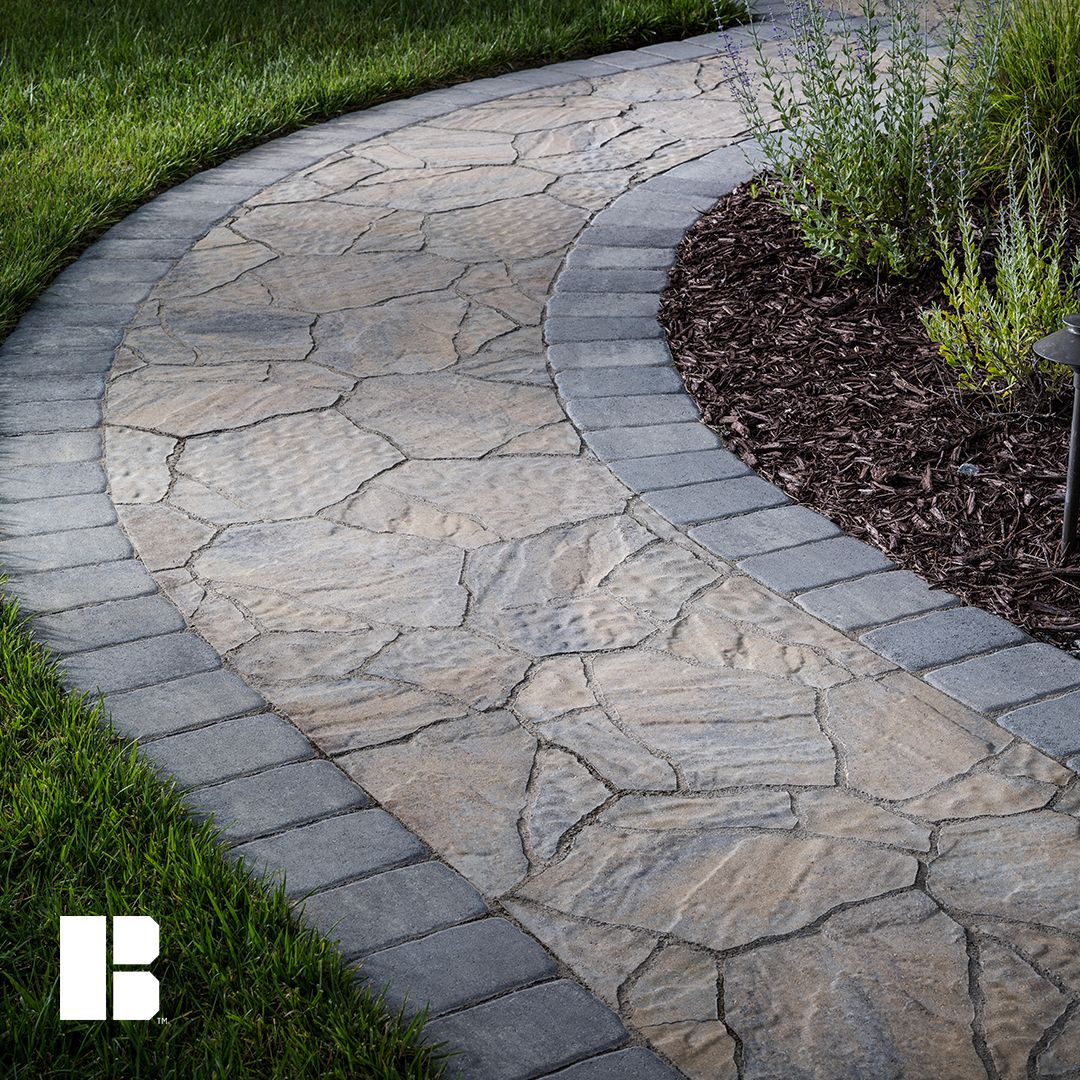
Source: pinimg.com
Brick, stone, and concrete walkways each offer distinct aesthetic qualities. Brick walkways can evoke a classic, traditional feel, especially when laid in a running bond or herringbone pattern. Imagine a charming pathway lined with red brick, complementing a colonial-style home. Stone walkways, particularly those using flagstone, offer a more natural and rustic look, blending seamlessly with gardens and landscaping. Visualize a meandering path of irregularly shaped flagstones, bordered by wildflowers. Concrete, while often perceived as less visually interesting, can be customized with various stamps, colors, and finishes to achieve diverse aesthetic effects. A contemporary home might feature a sleek, polished concrete walkway with integrated lighting.
Permeable Paving Materials and Environmental Benefits
Permeable paving materials, such as porous concrete or gravel, allow rainwater to seep through, reducing runoff and replenishing groundwater. This eco-friendly approach minimizes the impact on local drainage systems and helps to mitigate flooding. Furthermore, permeable pavements can reduce the urban heat island effect by allowing for better ground cooling.
Design Considerations for Hardscape Walkways
Careful planning is essential for creating a functional and aesthetically pleasing walkway. This section explores design aspects for various terrains and integrates natural elements.
Walkway Design for Sloped Terrain
Creating a stable and well-drained walkway on a slope requires careful consideration of grading and drainage techniques. Steps or retaining walls might be necessary to manage steep inclines. Proper drainage is crucial to prevent erosion and water damage. This can be achieved through the use of gravel beds, perforated pipes, or strategically placed swales to direct water away from the walkway. The walkway surface itself should be slightly sloped to facilitate water runoff.
Curved Walkway Design Incorporating Natural Elements
Imagine a gently curving walkway crafted from natural flagstone, meandering through a garden. The path gracefully winds past carefully placed boulders and lush plantings, creating a visually appealing and inviting space. The irregular shapes of the flagstones mimic the natural landscape, while strategically placed hostas and ferns add pops of green. The color and texture of the stone complement the surrounding environment, creating a harmonious blend of hardscape and softscape elements. Consider incorporating low-lying shrubs and groundcovers along the edges to soften the look of the stone and further integrate the walkway into the landscape.
Step-by-Step Guide to Walkway Layout Planning
Planning a walkway involves several key steps. First, determine the walkway’s purpose and desired location. Next, measure the area and sketch a preliminary layout, considering accessibility for all users (wheelchairs, strollers). Then, factor in traffic flow – avoiding sharp turns or bottlenecks. Finally, integrate the walkway seamlessly with the overall landscape design, considering existing features and plants. This process ensures a functional and aesthetically pleasing result.
Construction and Installation of Hardscape Walkways
This section details the practical aspects of installing hardscape walkways, from tool selection to decorative techniques.
Tools and Equipment for Concrete Walkway Installation
Installing a concrete walkway requires specific tools and equipment. These include shovels, wheelbarrows, a concrete mixer (or ready-mix concrete), screeds, floats, edgers, and a trowel. Safety precautions are paramount; always wear safety glasses, gloves, and sturdy footwear. Use appropriate respiratory protection when working with cement dust. Ensure the work area is clear of obstacles and that proper support is in place for any elevated sections of the walkway.
Step-by-Step Paver Installation Procedure
Laying pavers involves several steps: First, excavate the area to the desired depth, and compact the base thoroughly. Then, lay a layer of compacted gravel or sand as a base for the pavers. Next, carefully lay the pavers, ensuring they are level and properly spaced. Finally, fill the joints between the pavers with sand or polymeric sand to stabilize the surface. A consistent level throughout the entire walkway is crucial for both aesthetics and functionality.
Creating Decorative Patterns with Paving Materials
Various methods can be employed to create decorative patterns or designs. These include:
- Using pavers of different colors or sizes in a repeating pattern.
- Creating geometric designs by arranging pavers in specific configurations.
- Incorporating decorative borders or accents using contrasting materials.
- Using stencils to create unique patterns on concrete surfaces.
Maintenance and Repair of Hardscape Walkways
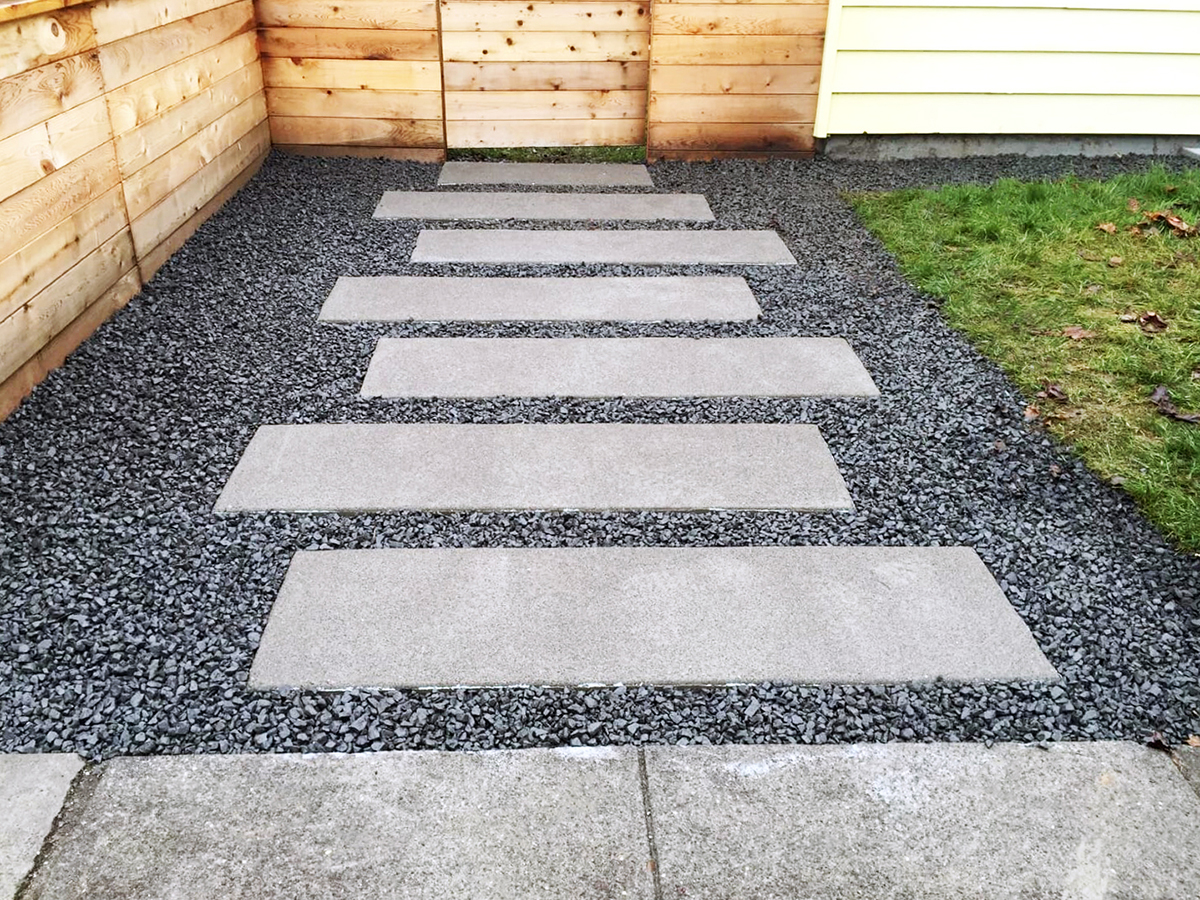
Source: vulcandc.com
Regular maintenance extends the lifespan of your walkway. This section covers common problems and their solutions.
Common Problems and Solutions
Common problems include cracking (often due to settling or frost heave), settling (uneven surfaces), and weed growth (especially in joints). Cracks can be repaired with concrete patching compound. Settling might require lifting and re-setting sections of the walkway. Weed growth can be controlled through regular weeding and the use of appropriate herbicides or joint fillers.
Regular Maintenance Schedule
A regular maintenance schedule varies depending on the material. Concrete walkways typically require occasional sealing to prevent staining and cracking. Brick and stone walkways may need repointing (replacing mortar in joints) every few years. All types benefit from regular cleaning to remove dirt and debris. Weed control is essential for all materials. The frequency of these tasks depends on the climate and the level of foot traffic.
Repairing Minor Cracks in Concrete Walkways
Minor cracks in concrete walkways can be repaired using a concrete patching compound. The crack should be cleaned thoroughly, and then the compound applied according to the manufacturer’s instructions. Ensure the repaired area is level with the surrounding surface for a smooth finish.
Hardscape Walkway Styles and Trends
Hardscape walkway design is constantly evolving. This section explores current trends and styles.
Emerging Trends in Hardscape Walkway Design, Hardscape walkways
Three emerging trends include: the increased use of permeable paving materials for environmental benefits; the integration of natural materials, such as reclaimed wood or river rock, for a more rustic aesthetic; and the incorporation of lighting and other decorative elements to enhance nighttime appeal.
Traditional vs. Modern Hardscape Walkway Designs
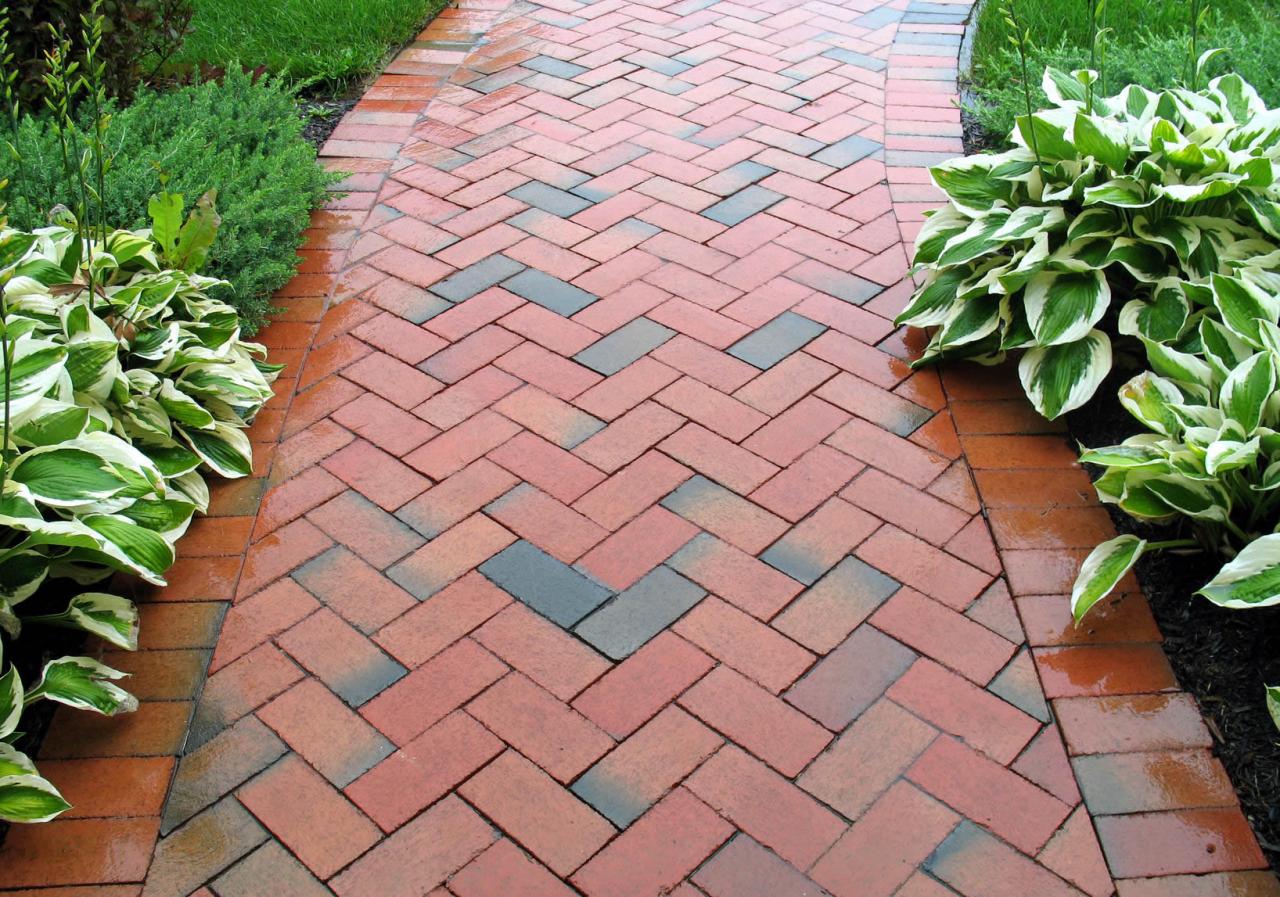
Source: letsrenovate.com
Traditional designs often feature classic materials like brick or stone, laid in formal patterns. Modern designs frequently incorporate clean lines, geometric patterns, and contemporary materials like concrete or metal. Traditional designs evoke a sense of timelessness and elegance, while modern designs offer a sleek and minimalist aesthetic.
Integration of Lighting and Decorative Elements
Lighting can dramatically enhance the beauty and safety of a walkway. Recessed lighting can be incorporated into steps or paving stones. Path lighting can create a warm and inviting atmosphere. Decorative elements, such as water features or sculptures, can add unique character and visual interest. Consider the use of solar-powered lights for an eco-friendly approach.
FAQ Insights: Hardscape Walkways
What is the lifespan of a typical hardscape walkway?
The lifespan varies greatly depending on the material used, climate, and maintenance. Brick and stone walkways can last for decades, while concrete may require more frequent repairs.
How much does it cost to install a hardscape walkway?
Costs vary widely based on size, materials, labor costs, and design complexity. Getting multiple quotes from reputable contractors is recommended.
Can I install a hardscape walkway myself?
Smaller projects are often DIY-friendly, particularly with pavers. Larger or more complex projects may require professional installation to ensure proper drainage and longevity.
How do I prevent weeds from growing between pavers?
Use a weed barrier fabric under the pavers during installation and regularly remove weeds that emerge through the joints.
What are some eco-friendly options for hardscape walkways?
Permeable pavers allow water to seep through, reducing runoff and benefiting the environment. Recycled materials are also a sustainable choice.
